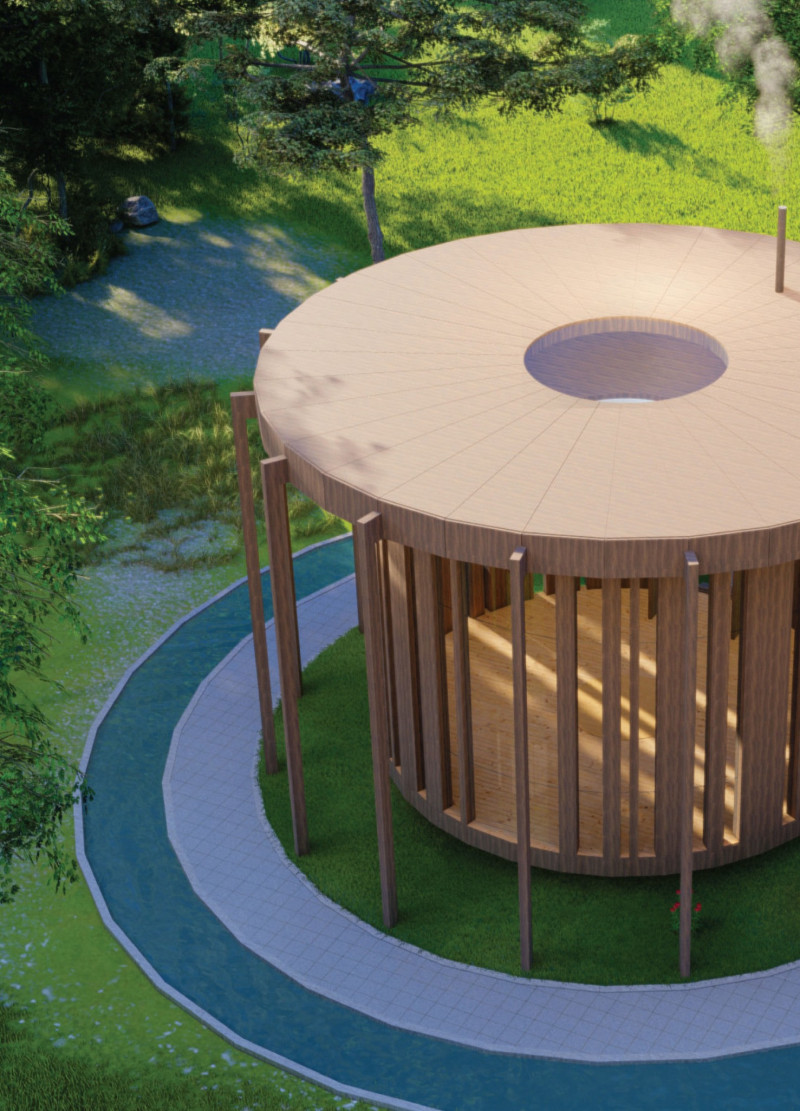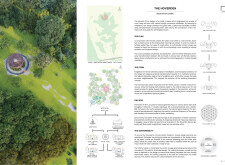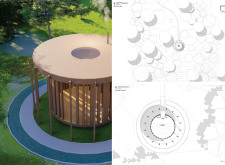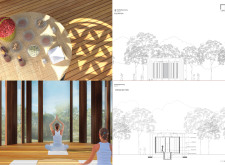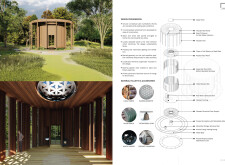5 key facts about this project
At its core, "The Hoverden" represents the harmony between humanity and nature. It serves the function of a refuge, where users can engage in various forms of meditation and wellness activities. The design emphasizes a holistic experience, allowing visitors to disconnect from the stressors of daily life and immerse themselves in a calming environment. The circular form of the cabin is particularly significant; it symbolizes unity and completeness, which are vital aspects of personal transformation. This intentional shape encourages a feeling of inclusiveness and community, inviting individuals to partake in shared experiences.
The architecture of "The Hoverden" employs several key elements and details that contribute to its effectiveness as a meditation space. The structure is primarily made of local timber, promoting sustainability and blending seamlessly with the natural backdrop. Large glass panels are strategically placed throughout the design, facilitating ample natural light while offering unobstructed views of the surrounding landscape. This integration of transparent materials enhances users' connection to the outside world, reinforcing the therapeutic benefits of nature.
An essential feature within the cabin is the retractable altar, which serves as a versatile space for various meditation practices. This design approach allows for adaptability, catering to the diverse needs and preferences of users. The interior layout includes a focal point defined by a flower of life pattern, rich with meaning and symbolic of sacred geometry. This element not only enhances the visual appeal of the space but also promotes a sense of balance and clarity, aligning with the cabin’s overarching goal of fostering mindfulness.
The cabin’s sustainability initiatives further illustrate its thoughtful architectural design. The incorporation of rainwater collection systems and solar-driven solutions underscore a commitment to minimizing environmental impact while promoting self-sufficiency. Additionally, the use of kinetic pavers throughout the pathways demonstrates innovative thinking; these elements harness movement to generate energy, creating a visually engaging and functional landscape.
Architectural details such as wooden paneling contribute to an evocative interior atmosphere characterized by warmth and comfort. The interplay of light and shadow within the cabin is carefully orchestrated to create a serene space conducive to meditation. This design element not only enhances the aesthetic qualities but also serves a practical purpose, as it allows the environment to change throughout the day, creating a dynamic experience.
In summary, "The Hoverden" is an exemplary project that reflects an important trend in architecture: the blending of mindfulness practices with environmentally conscious design. The thoughtful selection of materials, combined with a focus on spatial harmony and user experience, demonstrates the potential for architecture to enhance well-being and foster a deeper connection to nature. For those interested in understanding the intricate details of this meditation cabin, a review of the architectural plans and sections will provide valuable insights into its design philosophy and implementation. Exploring the architectural designs and ideas presented can broaden one's appreciation of how architecture can serve both functional and contemplative purposes in a sustainable and aesthetically pleasing manner.


